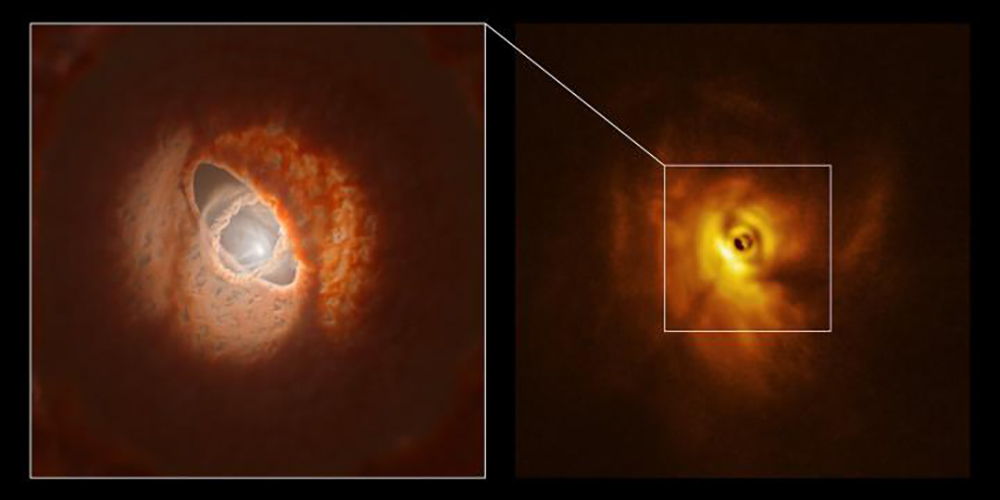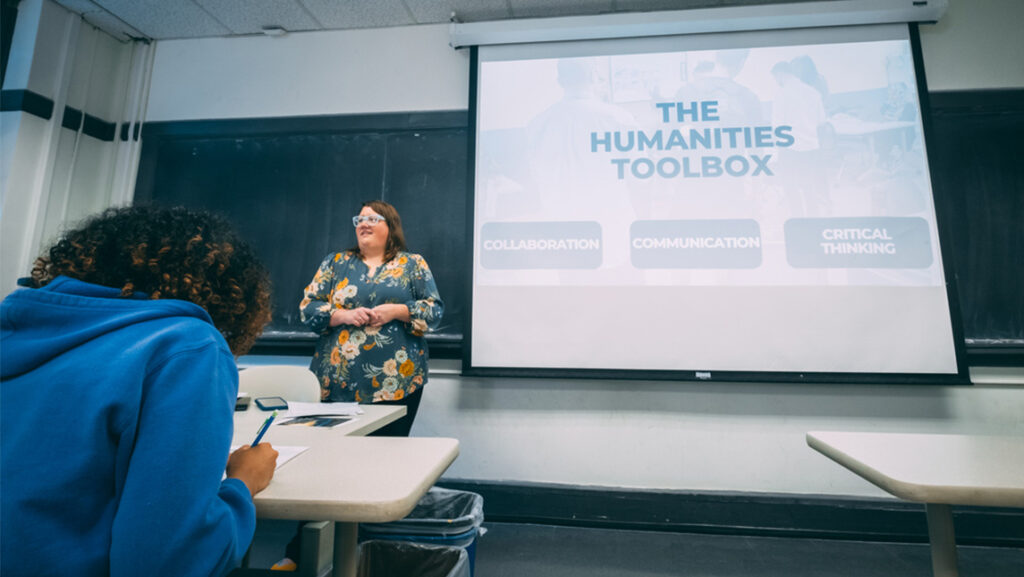Dr. Alicia Aarnio, assistant professor in the Department of Physics and Astronomy, is one of the authors of a new article in Science Magazine, on “A triple-star system with a misaligned and warped circumstellar disk shaped by disk tearing.”
Aarnio was part of a large collaboration of stellar object researchers who proposed for and were awarded observing time using the Gemini Planet Imager, an optics instrument used in conjunction with the Gemini South Telescope in Chile, that allows for the study of nearby stars and their planets.
She was tasked with selecting the stars that would be observed in the large study, which focuses on Herbig Ae/Be stars and their planet-forming disks.
What’s a planet-forming disk? “During the process of star formation, a disk of gas and dust forms around the young star, controlling the accretion of more material,” the study authors explain. “Once the star has formed, any leftover material in this circumstellar disk can form planets.”
Observations of one of the star systems, GW Orionis, led to the new article, which offers “the first direct evidence that groups of stars can tear apart their planet-forming disc, leaving it warped and with tilted rings,” according to a press release from the European Southern Observatory.
“This new research suggests exotic planets, not unlike Tatooine in Star Wars, may form in inclined rings in bent discs around multiple stars.”
Photography: ESO/L. Calçada, Exeter/Kraus et al.



